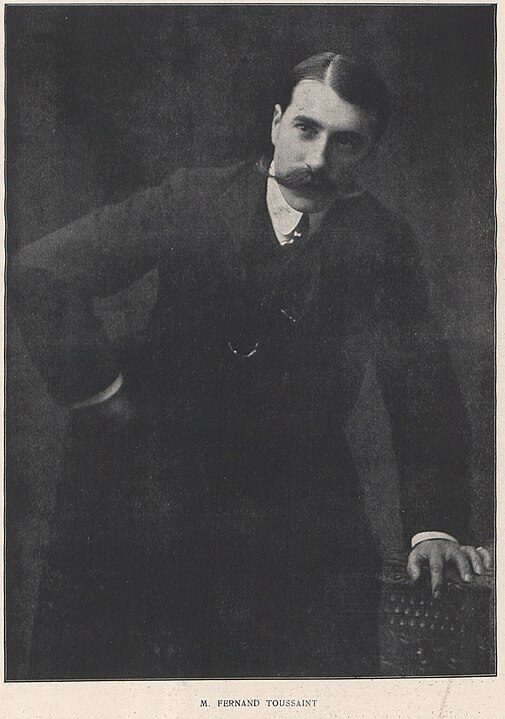
Fernand Toussaint (1873-1956) was a Belgian artist known for his mastery in various forms of art, including painting, watercolor, and illustration. Born in Brussels, he was a prominent figure in the Belgian art scene during the late 19th and early 20th centuries. His work is celebrated for its elegance, vibrant color palette, and the delicate portrayal of his subjects, which often included landscapes, still lifes, portraits, and genre scenes reflecting everyday life.
Early Life and Education: Fernand Toussaint was born into an environment that nurtured his artistic talents from a young age. He showed an early interest in art, which led him to study at the Académie Royale des Beaux-Arts in Brussels. There, he was mentored by Jean-François Portaels, a renowned Belgian orientalist painter, who had a significant influence on Toussaint’s development as an artist. Portaels’s guidance helped Toussaint refine his technique and instilled in him a love for light and color, which would become hallmarks of his work.
Artistic Career: Toussaint’s career took off in the late 19th century, a period marked by rapid societal changes and a flourishing art scene in Belgium. He quickly established himself as a versatile artist, adept in various mediums. His paintings often depicted elegant women, serene landscapes, bustling city scenes, and intimate interior settings, capturing the essence of Belle Époque Europe with a unique blend of realism and impressionism.
Toussaint’s portraits are particularly notable for their sensitivity and depth. He had a keen ability to capture the personality and mood of his subjects, making each portrait a deeply personal and evocative piece. His landscapes and cityscapes, on the other hand, displayed his skill in using light and color to create atmospheric effects, drawing viewers into the scenes he depicted.
His work was well-received both in Belgium and internationally, leading to exhibitions across Europe and even in the United States. Toussaint was not just a painter; he was also a skilled illustrator, contributing to magazines and books, which helped popularize his work among a broader audience.
Artistic Style and Influence: Toussaint’s style evolved over the years, but he remained true to his love for vibrant colors and dynamic compositions. His early work shows the influence of his teacher, Portaels, and the orientalist style, with a keen attention to detail and a preference for exotic subjects. However, as he matured, Toussaint embraced the impressionist movement, which was gaining popularity at the time. This shift is evident in his looser brushwork, lighter palette, and the spontaneous capture of light effects.
Despite his embrace of impressionism, Toussaint never fully abandoned the academic foundations of his training. His works retain a sense of structure and formality, blending the best of both worlds. This unique combination of styles set him apart from his contemporaries and contributed to his lasting legacy in the art world.
Legacy: Fernand Toussaint left behind a rich oeuvre that continues to be appreciated by art lovers and collectors. His paintings are part of numerous private and public collections, including museums in Belgium and abroad. Beyond his artistic output, Toussaint’s influence extends to the generations of artists he inspired. His ability to capture the beauty and subtlety of everyday life, combined with his masterful use of color and light, continues to inspire and captivate.
Though perhaps not as widely known as some of his contemporaries, Toussaint’s contribution to the art world is undeniable. His work encapsulates the spirit of an era, offering a window into the elegance and charm of Belle Époque society. As we look back on his art, Fernand Toussaint remains a figure of enduring significance in the history of Belgian art, celebrated for his distinctive style and the emotional depth of his work.




